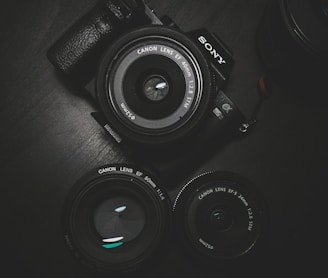Mastering the Art of Product Photography
Showcasing Your Products in Their Best Light
Shaheryar Mustafa
6/20/20232 min read


Introduction: In the world of e-commerce and digital marketing, product photography plays a pivotal role in attracting and engaging customers. A well-crafted product photograph has the power to captivate viewers, convey the essence of a product, and drive conversions. In this blog, we delve into the art of product photography, sharing essential tips and techniques to help you showcase your products in their best light and elevate your brand's visual identity.
Understanding Your Target Audience: Before you embark on your product photography journey, it's crucial to understand your target audience. Gain insights into their preferences, interests, and buying habits. This knowledge will help you tailor your product photography style to appeal directly to your ideal customers. Whether it's a minimalist, lifestyle, or high-fashion approach, align your visual storytelling with the tastes and aspirations of your target audience.
Quality Lighting is Key: Lighting is one of the most critical elements in product photography. Invest in quality lighting equipment to ensure your products are well-lit and free from unwanted shadows or reflections. Consider using a combination of natural light, diffusers, reflectors, and studio lights to create a professional and visually appealing look. Experiment with different lighting setups to achieve the desired mood and highlight the key features of your products.
Set the Stage with Props and Backgrounds: Choose props and backgrounds that complement your products and enhance their visual appeal. Consider the color palette, textures, and overall aesthetic of your brand when selecting props and backgrounds. Whether it's a clean and minimalistic backdrop, a rustic setting, or a vibrant and colorful scene, create a visual environment that tells a story and resonates with your target audience.
Showcasing Product Details: Your product photography should provide customers with a clear and detailed view of your products. Capture close-up shots that highlight the unique features, textures, and craftsmanship of your products. Use macro lenses or zoom in to capture intricate details that make your products stand out. Ensure your images are sharp, focused, and accurately represent the product's colors and textures.
Consistency and Branding: Maintain consistency in your product photography to create a cohesive and recognizable brand identity. Establish a visual style guide that outlines your preferred color schemes, lighting techniques, angles, and compositions. Consistency in product photography across your website, social media platforms, and marketing materials will enhance brand recognition and build trust with your customers.
Post-Processing and Editing: Post-processing is an essential step in product photography. Use professional photo editing software to refine your images, adjusting exposure, contrast, color balance, and sharpness. Remove any imperfections or distractions that may detract from the product. However, ensure that the final result remains authentic and accurately represents the product's appearance.
Incorporating Lifestyle and Context: In addition to product-centric images, consider incorporating lifestyle shots that depict your products in real-life contexts. Show how your products can be used or styled in various settings, allowing customers to envision themselves using or owning the products. Lifestyle photography adds depth and relatability, creating an emotional connection with your audience.
Conclusion: Mastering the art of product photography is crucial for showcasing your products in the best possible light and engaging customers in the online marketplace. By understanding your target audience, perfecting lighting techniques, selecting suitable props and backgrounds, and maintaining consistency in your visual branding, you can create captivating product photographs that drive conversions and build a strong brand identity. Remember, product photography is an ongoing process of experimentation and refinement, so stay open to new ideas and continually improve your skills to stay ahead in the competitive e-commerce landscape
